Houseplants require care. It is not natural for a plant to live indoors confined to a pot. In that environment, the plant relies on the grower to meet its requirements.
Your objective is to give each houseplant just the right amount of water and fertilizer as well as daily and long-term care to help it thrive.
Here are basic houseplant care needs:
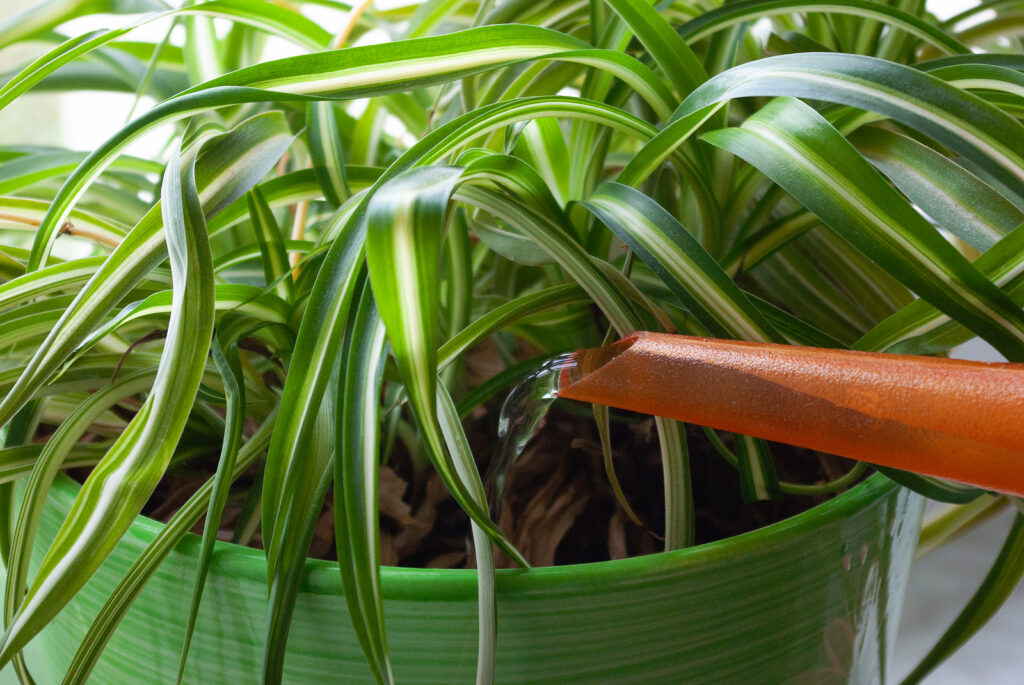
Water regularly
- Most houseplants do fine with regular weekly watering, but that is not a hard and fast rule. If your home is warm or you are running the heater in winter, check plants more than once a week to see if they need water.
- Use a moisture meter or your finger to know if the soil is moist; if the soil is dry deeper than 1 inch (2.5cm) into the soil, it is time to water.
- Water houseplants so that the soil is moist enough that water runs out the drainage hole at the bottom of the pot; then empty the saucer so that the pot does not sit in water.
- If you are unsure if the soil is moist enough, set the pot in a saucer or dish filled with water for 10 minutes; the soil will wick up the moisture it needs. After 10 minutes empty the saucer and all excess water to drain.
- If the soil pulls away from the end of the pot, the soil is very dry. Place the pot in a deep saucer or dish and fill it with water. Let it sit for an hour or two. If all the water is absorbed, repeat. Repeat until no more water is absorbed then empty the dish.
- Every couple of months, place your houseplants in the kitchen sink or in the bathtub and spray the leaves to remove dust. At the same time soak the soil and let the excess water drain away.
- Many houseplants will benefit from misting a few times a week; this will increase the humidity around plants that are mostly of tropical origin.
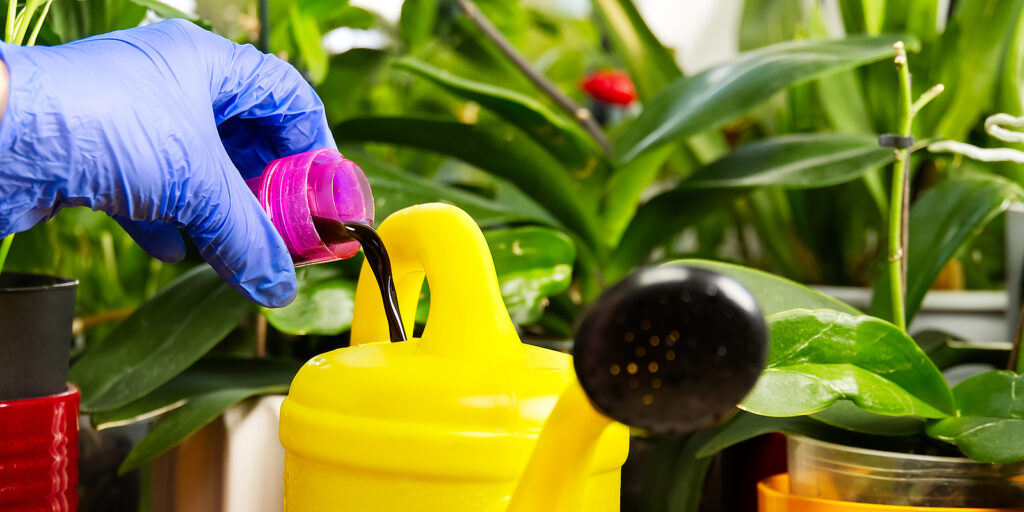
Fertilize as needed
- Houseplants need feeding. Use a water-soluble fertilizer or fertilizer stakes to feed houseplants. Follow the label directions.
- Complete houseplant fertilizers contain three basic nutrients: nitrogen, phosphorus, and potassium. The best fertilizers also contain trace elements such as calcium, magnesium, and iron.
- A fertilizer label will tell you the ratio of nitrogen, phosphorus, and potassium in the container; in order they are nitrogen (N), phosphorus (P), and potassium (K). A fertilizer with an NPK of 10-10-10 means there is 10 percent of each of the basic nutrients in the container.
- A common NPK ratio for houseplants is 5-10-5 for blooming houseplants and 10-5-5 for foliage houseplants—or thereabouts.
- Use a fertilizer that is formulated for houseplants; these will contain the proper balance of nitrogen, phosphorus, and potassium—the main nutrients plants need. If you are growing orchids or African violets, you will find fertilizers formulated specifically for those plants.
- Fertilizers will come in liquid or powdered form or in spikes or tablets. It is best to dissolve the fertilizer in water before applying; this will ensure an even application. Liquid fertilizers are a good choice for houseplants because they can be applied at the watering time; you can also easily dilute liquid fertilizers.
- As a rule, it is always best to dilute or underapply fertilizers rather than feed a little extra.
- Always apply fertilizers to moist, not dry, soils.
- Do not fertilize plants suffering from disease or pests; treat the problem before fertilizing.
- Fertilize “regularly” means fertilizing once a month unless you are using a slow-release or timed-release fertilizer (which is commonly applied every 2 or 3 months). Keep track of fertilizer application dates.
- Most newly purchased houseplants will not need fertilizing for about 3 months. The same is true of repotted plants that need about 3 months to get re-established.
- Most houseplants need little or no fertilizer during the winter months when plants are dormant. Wait until signs of new growth appear in spring before fertilizing again.
- If you apply too much fertilizer, the best course of action is to try to leach or wash the fertilizer out of the soil. Water the plant until water runs out of the drain hole, let it drain for a while longer, and then repeat.
Groom often
- Groom houseplants at the same time you water–regularly.
- Remove dead leaves and branches. Trim off brown leaf tips with a scissor.
- If the soil looks compacted, cultivate it lightly with a kitchen fork; this will help the soil absorb water better. If soil washes away, add soil to about 1 inch (2.5cm) below the lip of the pot.
- If leaves look dusty, gently wipe them with a damp cloth or shower them lightly under a faucet (always use unsoftened water).
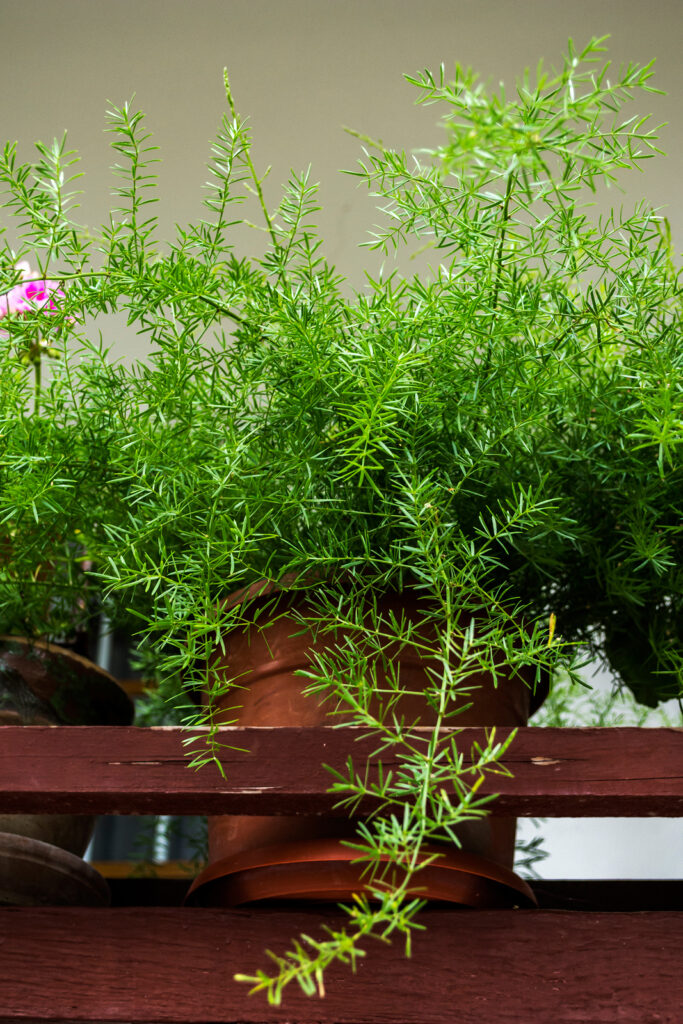
Pinch and prune
- Pinching and pruning can help keep houseplants at the proper scale for the spot where they are growing in your house.
- Pinching encourages bushy growth; pruning reshapes a plant that is out of proportion.
- Pinch off growing tips of unwieldy branches just above a leaf or leaves. Use your thumb and forefinger. This forces lower side buds to form new branches. Pinching is a way to keep plants from growing leggy or straggly. Pinching should be done on a regular basis. Don’t pinch plants with a single growing stem such as dracaenas or palms.
- Pruning is done to reshape a plant. Prune leggy growth or branches that have grown awry. Prune to improve a plant’s appearance. Prune by cutting back end growth to a leaf bud; that bud will become the new terminal bud.
- Root pruning is done to control a plant’s size by slowing its growth. Root prune by removing a plant from its pot then using a sharp knife to trim off portions of the root ball on all sides. Never remove more than one-third of the total root volume. Return a root-pruned plant to its pot and fill in around the sides with new potting soil.
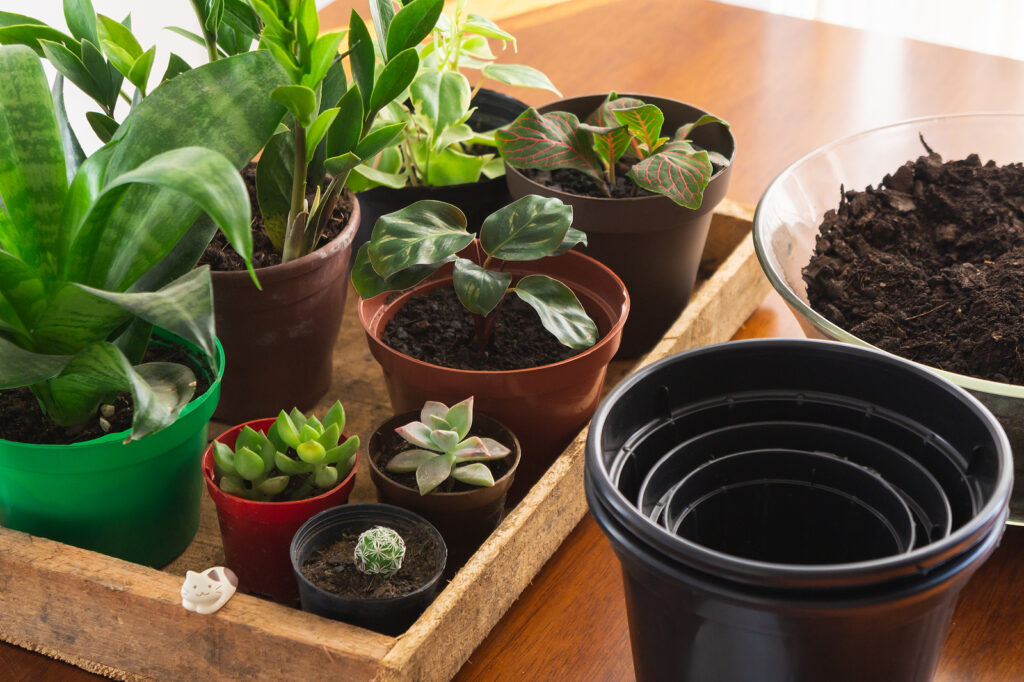
Repot as needed
- Repotting can invigorate a plant by giving it new potting soil.
- Repot rootbound plants—plants with roots growing out of the drainage hole or over the rim.
- Repot top-heavy plants; repot to a pot that is in proportion to the plant’s size.
- To repot, remove the plant from its pot holding the stem and soil surface in one hand and inverting the pot with the other. You may need to thump the pot to loosen the plant.
- Examine the rootball and root prune if the roots are overgrown.
- Commonly, repot to the next size larger pot ½ to 1 inch (2.5cm) wider than the current pot.
- Set the top of the old root ball about 1 inch (2.5cm) below the rim of the new pot and fill in around the sides with new potting soil; thump the side of the new container to settle the soil.
- Water the plant and place it in a cool spot away from direct sunlight for several days.
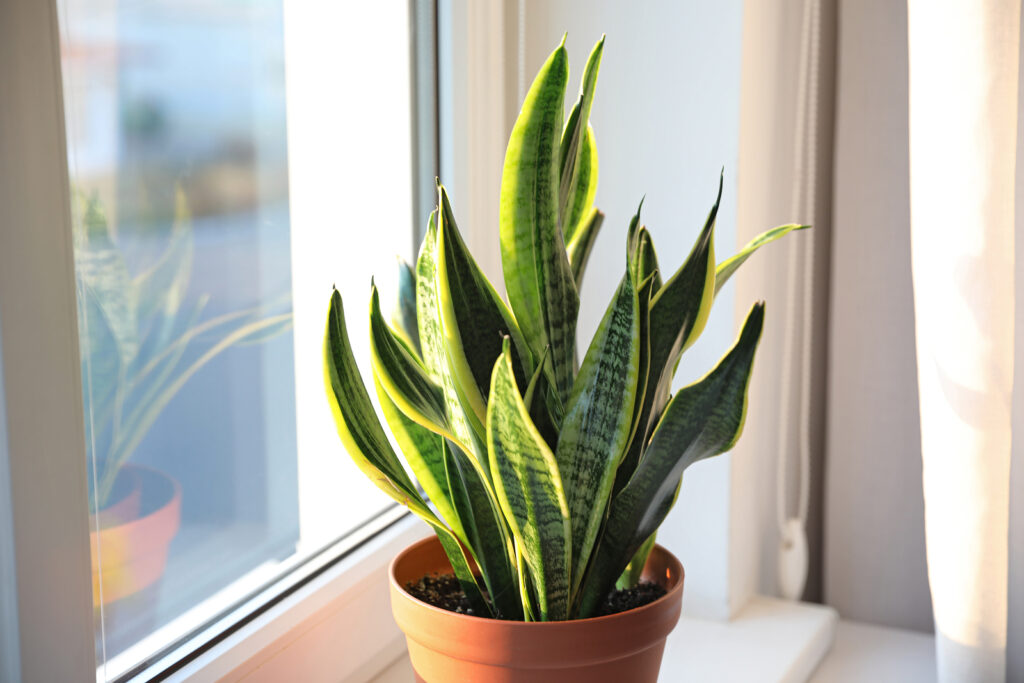
Propagate new plants
- Plantlets are tiny plants that appear as outgrowths above the soil of an established plant. They are sometimes called “pups.” Root a plantlet by allowing it to stay attached to the parent plant; use a paper clip to place the plantlet in contact with the soil until it roots then it can be cut away from the parent.
- Stem cuttings about 4 inches (10cm) long can be rooted in a mixture of half perlite and half sand or indoor potting soil with perlite added. Remove the lower leaves of the cutting, dip the stem in rooting hormone, and insert it into the rooting medium. Keep the medium just moist until the cutting roots and can be transplanted into potting soil.
- Divisions can be taken from plants that form clumps. Each clump will have its own roots. Carefully cut or pull away a rooted section and repot it to create a separate plant.
Also of interest:



